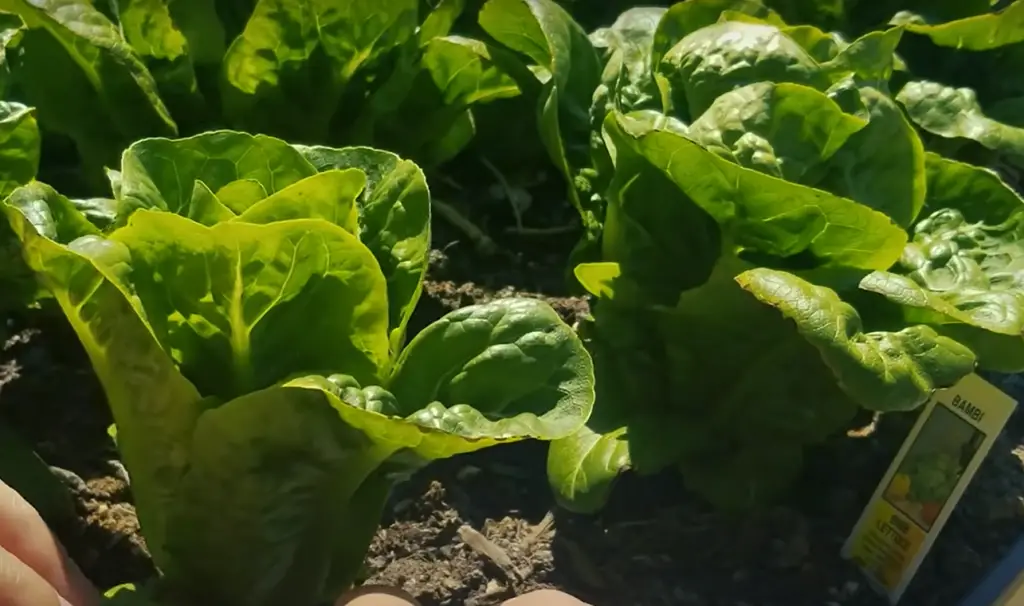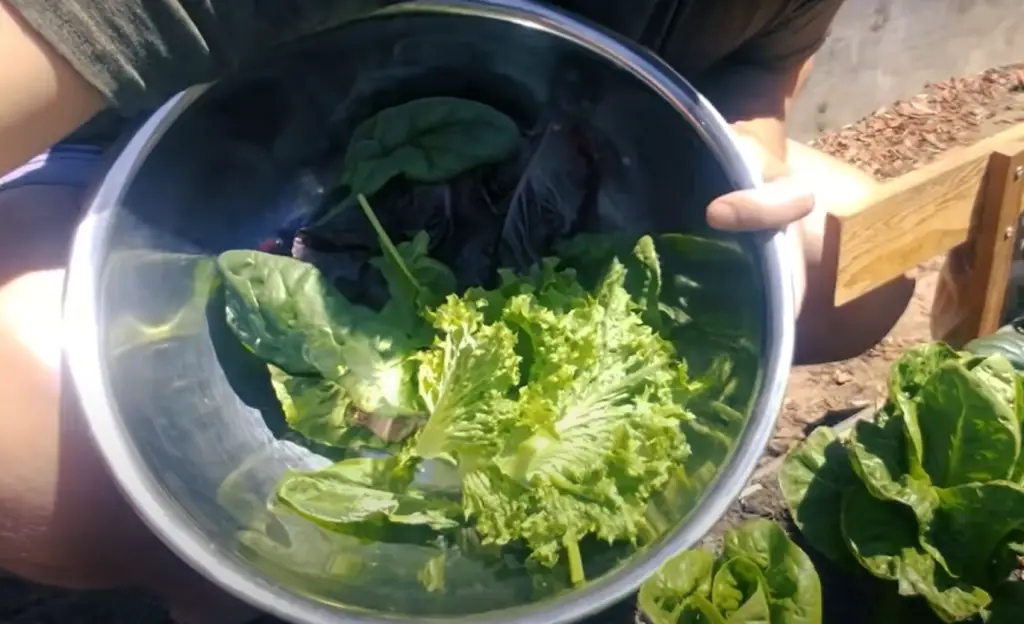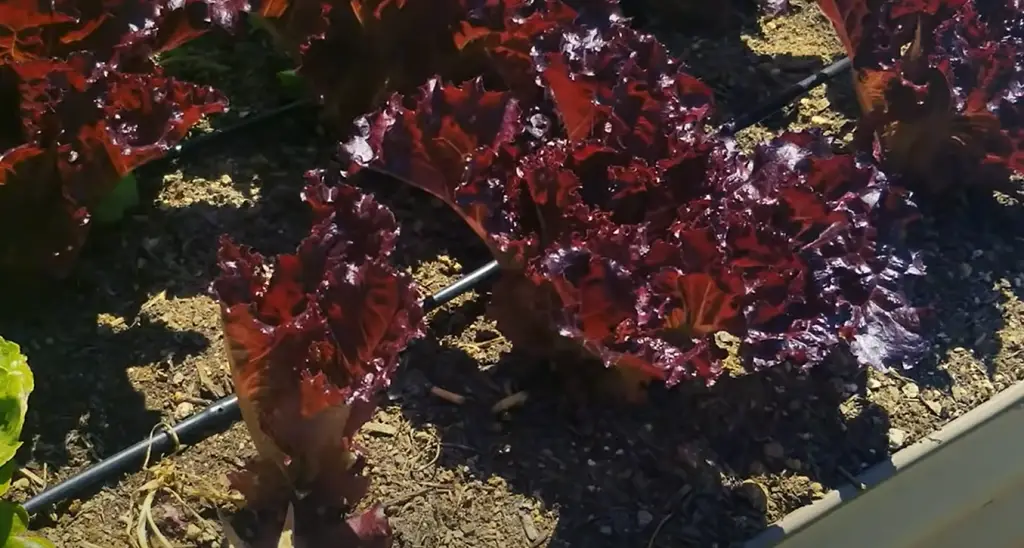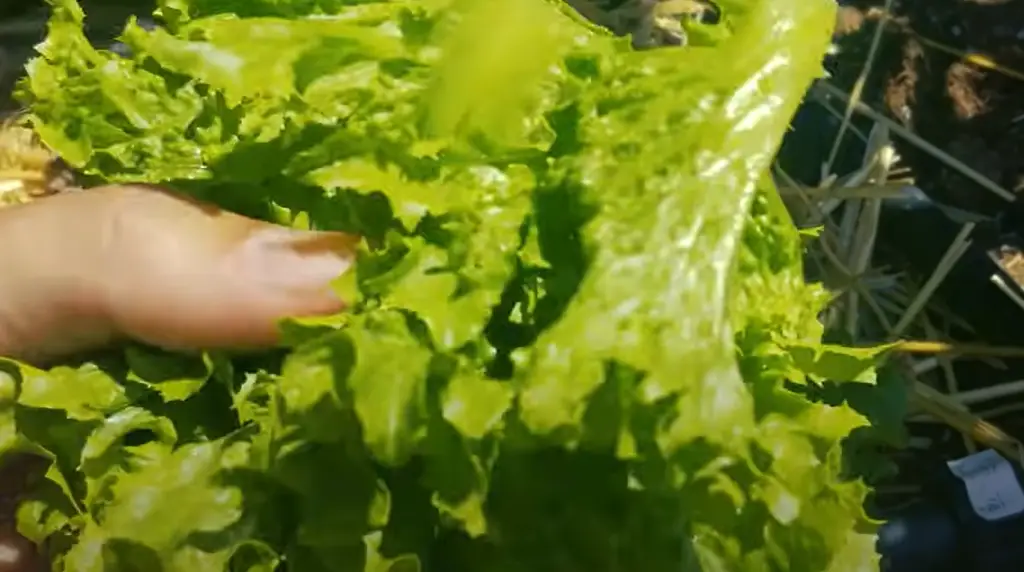Picking lettuce might seem like a pretty easy task, but if you want to make sure that you’re picking the right leaves and not damaging the plant, it’s important to know how to do it properly. In this epic guide, we will answer common questions about how to pick lettuce from a garden. We’ll provide tips on what types of lettuce are best for harvesting, and show you how to do it in a way that doesn’t damage the plants. Let’s get started!
Lettuce and Its Benefits
Lettuce is a leafy green vegetable that can be eaten raw or cooked. It is often used in salads and sandwiches, and is also a common ingredient in soups and stews. It is a good source of vitamins A and C, and it also contains iron and calcium. Lettuce is low in calories and fat, making it a healthy addition to any diet.
There are many different types of lettuce, including iceberg, Romaine, butterhead, looseleaf, and crisphead. The type of lettuce you choose will depend on your personal preference and what you plan to use it for. For example, iceberg lettuce has a mild flavor and crunchy texture that makes it ideal for salads, while Romaine lettuce has a slightly bitter taste that some people prefer in cooked dishes.

But generally, lettuce can be categorized into two types: leaf lettuce and head lettuce.
Leaf lettuce, as the name suggests, has leaves that are loosely attached to the stalk. This type of lettuce is generally more delicate and has a higher water content than head lettuce. Leaf lettuce includes varieties such as Romaine, iceberg, butterhead, and looseleaf.
Head lettuce, on the other hand, has leaves that are tightly bound to the stalk. Head lettuces are generally more robust and have a lower water content than leaf lettuces. Head lettuce includes varieties such as crisphead and cabbage.
Once you have chosen the type of lettuce you want to grow, you will need to purchase seeds or plants from a nursery or garden center. If you are growing lettuce from seed, you will need to start them indoors about six weeks before the last frost date in your area. Once the seedlings have grown large enough to be transplanted, you can then move them outdoors. [1]
When You Should Pick Lettuce
No matter what type of lettuce you choose, it is important to pick it fresh from the garden. Lettuce that has been sitting out in the sun will be wilted and taste bitter. Lettuce that is too ripe will also taste bitter. The best time to pick lettuce is when the leaves appear to be at least 4 inches long. If you are unsure whether or not the lettuce is ready to be picked, it is better to err on the side of caution and wait a few more days.
As you can see, lettuce that is starting to wilt or turn brown will not taste as good and may be more difficult to digest. When picking lettuce, look for leaves that are crisp and green. Avoid any leaves that are wilted, yellow, or have brown spots.
For How Long Can You Keep Lettuce in Your Garden?
After the leaves have already started to grow, you can actually keep lettuce in your garden for quite some time. Most types of lettuce will remain fresh for about two weeks after they are picked. If you plan on storing the lettuce for a longer period of time, you can do so by placing it in a plastic bag and putting it in the refrigerator.
What Time of Day Should You Harvest?
We recommend you to harvest your lettuce in the morning, just after the sun has risen. The reason for this is that the lettuce will be crisp and have the most flavor.
If you want to harvest lettuce during a hot day, be sure to put it in the refrigerator as soon as possible to keep it fresh.

You may also want to invest into row covers, which will protect your lettuce from the sun and keep it cool during hot days. [2],[3],[4]
Why is It Important to Pick Lettuce Properly?
While it may seem like a simple task, picking lettuce properly can make a big difference in the quality of your harvest. Lettuce is a delicate plant and if not picked correctly, it can bruise easily. This can cause the leaves to turn brown and wilt, making them less enjoyable to eat.
It ensures the lettuce will have the best flavor
Picking lettuce at the right time is crucial to getting the best flavor. Lettuce that is picked too early will be bitter, while lettuce that is picked too late will be limp and bland. The key is to pick lettuce when it is just the right level of maturity. This can vary depending on the type of lettuce, but generally, you want to pick it when the leaves are crisp and green. To ensure your lettuce tastes its best, it’s important to pick it at the peak of ripeness. This can vary depending on the type of lettuce, but generally, you want to pick it when the leaves are crisp and green.
It prevents the lettuce from bolting
Bolting is when a plant flowers and goes to seed. This usually happens when the plant gets too hot or stressed. When lettuce bolts, the leaves become tough and bitter. To prevent this from happening, it’s important to pick the lettuce before it gets too big or starts to flower.
Picking lettuce at the right time can also prevent it from bolting. Bolting is when a plant flowers and goes to seed. This usually happens when the plant gets too hot or stressed.
It ensures that the plant will continue to grow
Another reason why it’s important to pick lettuce properly is because it ensures that the plant will continue to grow. If you remove too many leaves at once, it can shock the plant and stunt its growth. It’s best to pick a few leaves at a time, so that the plant can continue to thrive. [3]
How to Pick Leaf Lettuce
We’ll start with the most common type of lettuce, leaf lettuce.
It is distinguished from head lettuce by its lack of a tight head or heart. Leaf lettuce is grown throughout the world and is a staple in many cuisines. Leaf lettuce is what you’ll find in most salads and sandwiches. It has long, thin leaves that are attached at the base.Pick or cut outer leaves first
The first step is to pick or cut the outer leaves. These are the ones that are furthest from the center of the plant. They’re also the ones that are most exposed to sunlight, so they’ll be more likely to be damaged by pests or diseases. You can either pick them by hand or cut them with a knife. If you’re using a knife, make sure it’s sharp so you don’t damage the leaves.

Make sure to cut them above the crown, which is the white part at the base of the leaf. The crown is where new leaves will grow, so if you cut it, the plant will be damaged.
Cut loose leaves
Once you’ve removed all of the outer leaves, you can begin picking the inner ones. These will be more tender and easier to eat. Again, you can do this with your hands or a pair of scissors.
This will help prevent the spread of disease. Just be sure to leave some leaves on the rp knife to cut the lettuce leaves at the base of the plant, close to the soil. You can also use scissors for this. Be sure not to damage the leaves of other plants nearby when cutting your lettuce.Leaf lettuce plants have multiple layers of leaves. The outer leaves are the oldest and the ones closest to the center of the plant are the youngest. You can tell which leaves are which by their color. The outer leaves will be a darker green, while the inner leaves will be a lighter green.
Because different rows have different maturity, it’s important to stagger your lettuce harvesting. This ensures a continuous supply of leaf lettuce over an extended period of time.
Wash and dry your lettuce
Once you’ve picked your lettuce, it’s important to wash and dry it as soon as possible. This will help prevent the spread of bacteria and keep the leaves fresh.
To wash your lettuce, fill a sink or bowl with cold water and add the leaves. Swish them around for a few seconds to remove any dirt or debris. Then, lift the leaves out of the water and place them in a colander or strainer. Rinse the leaves with cold water from a sprayer or faucet. [4]
How to Pick Head Lettuce
Head lettuce is what you typically think of when you think of lettuce. It has a tight head or heart, like iceberg lettuce, and is usually the star of the salad. Head lettuce comes in many varieties, including romaine, butterhead, and crisphead.
Cut the entire head of lettuce
Cutting the entire head of lettuce is the easiest way to harvest it. Use a sharp knife or pair of scissors to cut the head of lettuce at the base, close to the soil.

Again, be sure not to damage the leaves of other plants nearby when cutting your lettuce.
Leave about an inch of the plant above the soil
Just like leaf lettuce, head lettuce can regrow over time. To ensure that your plant continues to produce heads of lettuce, be sure to leave about an inch of the plant above the soil when you cut it. If you cut the plant too close to the ground, it may not regrow. [2]
FAQ
Will lettuce regrow after cutting?
Lettuce will not regrow right after being cut, but if you leave the roots in the ground, it may produce a new plant. As long as you carefully remove the old leaves and don’t damage the roots, your lettuce should be fine.
How do you pick lettuce from the garden so it keeps growing?
The best way to pick lettuce from the garden so it keeps growing is to cut the stem about an inch above the ground. This will allow the plant to continue growing and produce more leaves.
Make sure you use a tool sharp enough to cut the stem cleanly, such as a pair of scissors or a sharp knife.
How do I pick my homegrown lettuce?
Assuming you have already planted and cared for your lettuce plants, it is now time to harvest them. Lettuce is a cool weather crop, so it is best to pick it in the morning or evening when the temperature is cooler. You will want to cut the lettuce at the base of the plant with a sharp knife or scissors. Try to avoid bruising the leaves as you harvest them.
You can eat your lettuce immediately after harvesting it, or store it in a cool, dry place for later use. If you plan on storing your lettuce, make sure to wash and dry it thoroughly before putting it in a storage container.
How do you pick lettuce without killing the plant?
The best way to pick lettuce without harming the plant is to use a sharp knife or pair of scissors. Cut the stem of the lettuce close to the base of the plant. Be sure not to cut too deeply, as this can damage the roots.
If you are using scissors, be sure to clean them before and after cutting the lettuce. This will help prevent the spread of disease.
It is also important to handle the lettuce carefully. Gently lift it from the ground and avoid pulling or tearing it. Doing so could damage the leaves or cause them to bruise.
Do you pull or cut lettuce from the garden?
You can either pull or cut lettuce from the garden, depending on your preference. If you want to keep the leaves intact, then cutting is the best option. However, if you don’t mind some damage to the leaves, then pulling is fine.
Useful Video: Maximize Harvesting Lettuce With The Cut and Come Again Method
Conclusion
Lettuce is a great addition to any garden, and with the right care, it can provide you with an abundance of fresh, healthy greens. If you want to harvest lettuce while it’s best, and ensure your plant will stay in great health, then follow the tips in this guide. Picking lettuce early in the morning will give you the crispest, most flavorful leaves. Don’t forget to use well-sharpened tools as you cut the lettuce to ensure a clean cut. And when it comes to storage, keep your lettuce in a cool, dark place until you’re ready to use it. With these tips in mind, you’ll be able to pick and enjoy delicious, fresh lettuce from your garden all season long! Thanks for reading and happy gardening!
References:
- https://www.goodhousekeeping.com/food-recipes/cooking/g532/types-of-lettuce/
- https://www.gardeningknowhow.com/edible/vegetables/lettuce/harvesting-leaf-lettuce.htm
- https://growfully.com/how-to-harvest-lettuce/
- https://www.attainable-sustainable.net/know-how-harvesting-lettuce/










Leave a Reply
View Comments